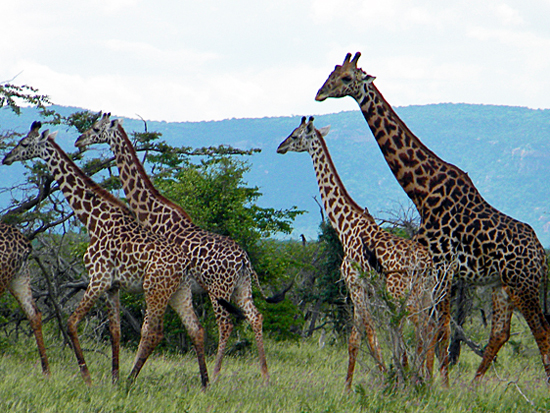Microsoft, Allianz and Puma take alternative view of offsets

Image courtesy of Wildlife Works
If human activities contribute to climate change, what can humans do to manage their impact on the environment?
That was the central agenda for the inaugural symposium on REDD+ and climate change held last month byWildlife Works and CSRwire. The event focused on helping corporate executives understand the critical issue of deforestation and how their businesses will be affected -- if they haven't been already -- if necessary steps aren't taken to mitigate climate change.
One of the most popular attempts at mitigating climate change is to "offset" humans' negative impact on the environment with positive impacts through the mechanism known as carbon credits. Carbon offsets have been controversial for a variety of reasons, including problems with quality and verification. But some companies, such asMicrosoft,AllianzandPuma, have found value in using carbon credits more broadly to further their sustainability goals by managing risk, putting a price on carbon and enhancing reputations.
These companies are working withWildlife Works去做这个。该组织将碳偏移连接到社区建设,社会企业,教育,野生动植物保护以及敬业的员工,客户和合作伙伴。野生动物工程保护了500,00英亩的肯尼亚森林,创造了数百名游骑兵的工作,以保护森林,种植树木,并与其合作伙伴PUMA创造社会企业的工作和教育。
It is disguised as a carbon offset seller, when in reality it is a social enterprise and brand value developer.
Expanding the use of carbon offsets
In the case of Microsoft, management identified an internal carbon fee across all 14 divisions. Once a dollar value was placed on carbon emissions, managers were required to remit a fee to the "home office."
This fee was then allocated to carbon offset projects, such as preserving forests, protecting wildlife, creating jobs and education. Once the numbers started to add up, the divisions' finance chiefs began to get creative with their approach to carbon emissions. Essentially, the dollar value of carbon impact was merely a way to get these chiefs' attention,according to TJ DiCaprio, Microsoft's senior director for environmental sustainability.
Image courtesy of Wildlife Works.
Suddenly, everyone became comfortable with talking about how they could expand the internal carbon fee initiative to other firms, divisions and initiatives.
Meanwhile, Puma recognized that climate change affects every lifestyle consumer – and thus, as a seller of products targeting these consumers, climate change also could have a direct impact on its bottom line. It set out to position itself as one of the world's most sustainable lifestyle companies, wielding offsets to help reinforce its position.
Once Puma's sustainable guru Martyn Bowenpitched carbon offsettingfrom this point of view, management began to support the efforts.
For insurer Allianz, unpredictable weather patterns meant uncertainty in pricing risk. When your primary product is based on how you assess your investments' risk, understanding the potential impact of climate change on its risks and profits is critical. The greater the risk, the greater the possibilities of incurring a loss,explained Martin Ewald, the company's portfolio manager for renewable energy and infrastructure equity.
Carbon offsets and voluntary disclosure of carbon emissions reduce the company's risk by allowing management to price and manage the risk, thus sustaining its bottom line. Carbon offsetting made sense for the insurance company.
With these Wildlife Works case studies in place from Microsoft, Puma and Allianz, many other companies are likely to follow. While several companies have experimented with offsets for years, these three have honed in on a substantially more appealing motivation for companies to include carbon offsetting in their sustainability strategies: growing social enterprise and brand value vs. simply offsetting emissions.
And as more firms begin using carbon offsets to grow brand value, rather than only to offset emissions, these carbon credits soon could contribute to the bottom line in a mainstream way.
